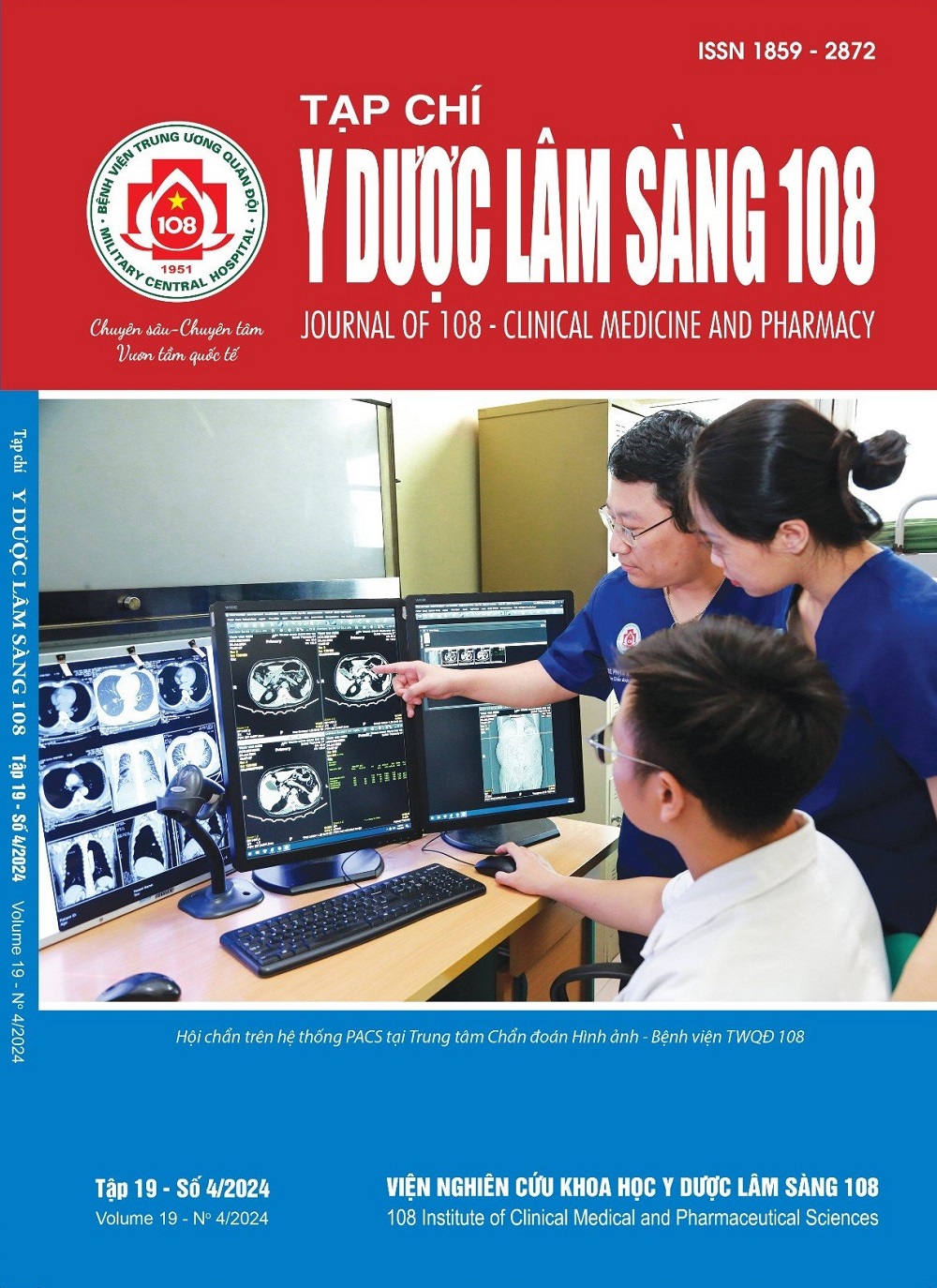Evaluate some anatomical features related to indication and surgical time of minimally invasive aortic valve replacement technique through the right anterior thoracotomy at the 2nd intercostal space
Main Article Content
Keywords
Abstract
Objective: To evaluate some anatomical features related to indication and surgical time of minimally invasive aortic valve replacement technique through the 2nd intercostal space right anterior thoracotomy. Subject and method: Study on 74 patients undergoing mininally aortic valve replacement at Hanoi Heart Hospital and 108 Military Central Hospital, from October 2019 to December 2022. Preoperative multiple slices computed tomography to evaluate the position of the aorta and anatomical features related to the surgical technique. Result: The ratio of aorta deviation to the right compared to the right sternal border was 44.6%, left deviation was 55.4%. The average aortic clamping and cardiopulmonary bypass times in aortic valve replacement were 91.4 ± 23.0 and 137.5 ± 27.7 minutes. Left aortic deviation combined with aortic valve calcification ≥ 3000 AU significantly increases the time of aortic clamping and cardiopulmonary bypass. The aortic deviation, valve calcification, distance from aorta to sternum, aortic valve to chest wall, and the diameter of the valve annulus did not have much impact on aortic cross clamping time. Conclusion: The aortic valve replacement technique through the 2nd intercostal space right anterior thoracotomy does not only to be limited to cases with the right deviated aorta but also expands the indications further. Each anatomic feature has not separately impact on surgery time significantly. The left deviated aorta and aortic valve calcification ≥ 3000AU increase aortic cross clamping and cardiopulmonary bypass time.
Article Details
References
2. Tavakoli R, Leprince P, Gassmann M, Jamshidi P, Yamani N, Amour J, Lebreton G (2018) Technique and patient selection criteria of right anterior mini-thoracotomy for minimal access aortic valve replacement. J Vis Exp (133): 57323. doi: 10.3791/57323.
3. Stolinski J, Plicner D, Grudzien G et al (2016) Computed tomography helps to plan minimally invasive aortic valve replacement operations. The Annals of thoracic surgery 101(5): 1745-1752. doi:10.1016/j.athoracsur.2015.10.076.
4. Van Praet KM, van Kampen A, Kofler M et al (2020) Minimally invasive surgical aortic valve replacement: The RALT approach. Journal of cardiac surgery 35(9):2341-2346. doi:10.1111/jocs.14756.
5. Lamelas J, Mawad M, Williams R, Weiss UK, Zhang Q, LaPietra A (2018) Isolated and concomitant minimally invasive minithoracotomy aortic valve surgery. The Journal of thoracic and cardiovascular surgery 155(3): 926-936. doi:10.1016/j.jtcvs.2017.09.044.
6. Boti BR, Hindori VG, Schade EL et al (2019) Minimal invasive aortic valve replacement: Associations of radiological assessments with procedure complexity. J Cardiothorac Surg 14(1): 173. doi:10.1186/s13019-019-0997-5.
7. Jug J, Štor Z, Geršak B (2021) Anatomical circumstances and aortic cross-clamp time in minimally invasive aortic valve replacement. Interactive cardiovascular and thoracic surgery 32(2):204-212. doi:10.1093/icvts/ivaa251.
8. Barthelemy Y, Camilleri L, Pereira B, Farhat M, Cassagnes L, d’Ostrevy N (2022) Eligibility for minithoracotomy aortic valve replacement: From Van Praet classification to complex scanner measurements. Scientific Reports 12(1): 10951. doi:10.1038/s41598-022-14994-1.
 ISSN: 1859 - 2872
ISSN: 1859 - 2872
